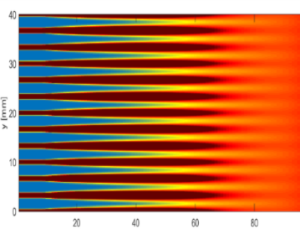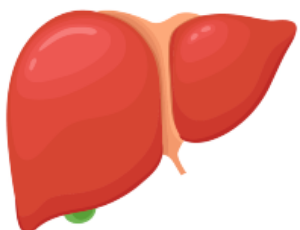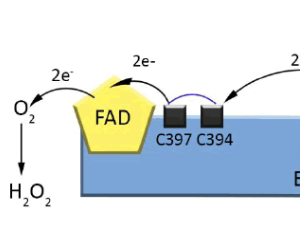Loading
Journal of Cancer Immunology
ISSN: 2689-968X
Most Cited Articles
pMB FLASH - Status and Perspectives of Combining Proton Minibeam with FLASH Radiotherapy
Judith Reindl, Stefanie Girst
Proton minibeam radiotherapy (pMBRT) is an external beam radiotherapy method with reduced side effects by taking advantage of spatial fractionation in the normal tissue. Due to scattering, the delivered small beams widen in the tissue ensuring a homogeneous dose distribution in the tumor. In this review, the physical and biological principles regarding dose distribution and healing effects are explained. In the last decade, several preclinical studies have been conducted addressing normal tissue sparing and tumor control in-vitro and in-vivo, using human skin tissue and mouse or rat models. The major results acquired in these studies are summarized. A further newly emerging therapy method is FLASH radiotherapy, i.e. the treatment using ultra-high dose rates. The possibility of combining these methods in proton minibeam FLASH therapy (pMB FLASH) is worked out. Additionally, technical feasibility and limitations will be discussed by looking at simulations as well as preclinical studies and also pointing out new ways of delivering the desired tumor dose, such as interlacing. We will also highlight the opportunities that emerge regarding high dose radiation, hypofractionation and the combination with immunotherapy.
J Cancer Immunol, 2019, Volume 1, Issue 1 | DOI: 10.33696/cancerimmunol.1.003
CTLA-4 and PD-L1 or PD-1 Pathways: Immune Checkpoint Inhibitors and Cancer Immunotherapy
Sachin Kumar Deshmukh
The immune system developed certain checks and balance to control or inhibit the reactivity against normal cells of the body. Uncontrolled immune responses to the non-self entities such as bacteria, viruses, parasites, or mutated self-antigens can cause an inflammatory reaction and autoimmune diseases.
J Cancer Immunol, 2020, Volume 2, Issue 1, p10-12 | DOI: 10.33696/cancerimmunol.2.007
SHP2 Inhibition as a Promising Anti-cancer Therapy: Function in Tumor Cell Signaling and Immune Modulation
Jiawan Wang, Lindy Zhang, Christine A. Pratilas, Nicolas J. Llosa
The protein tyrosine phosphatase SHP2, encoded by PTPN11, functions as a critical signal transduction regulator and interacts with key signaling molecules in both RAS/ERK and PD-1/PD-L1/ BTLA (B- and T-lymphocyte attenuator) pathways. Targeting SHP2 pharmacologically, therefore, may be a promising therapeutic strategy for many RAS-driven cancers.
J Cancer Immunol, 2021, Volume 3, Issue 1, p18-29 | DOI: 10.33696/cancerimmunol.3.038
Emerging Potential of Plant Virus Nanoparticles (PVNPs) in Anticancer Immunotherapies
Mehdi Shahgolzari, Steven Fiering
Plant virus nanoparticles (PVNPs) are increasingly recognized and studied for use in biomedical applications. PVNPs include plant virions with self-assembled capsid protein coats (PC) that encapsulate the virus genome, and virus-like particles (VLPs), a capsid without the viral genome.
J Cancer Immunol, 2022, Volume 4, Issue 1, p22-29 | DOI: 10.33696/cancerimmunol.4.061
Immunogenic Cell Death: A Step Ahead of Autophagy in Cancer Therapy
Gourab Gupta, Kristina Borglum, Hexin Chen
Cell Death has long been considered to be an inevitable part of the life cycle of a cell and hence, considered a familiar consequence of cellular life.
J Cancer Immunol, 2021, Volume 3, Issue 1, p47-59 | DOI: 10.33696/cancerimmunol.3.041
Inhibition of Autophagy and Immune Response: Alpha-fetoprotein Stimulates Initiation of Liver Cancer
Mingyue Zhu, Mengsen Li
Alpha-fetoprotein (AFP) is a tumorous marker for the diagnosis of hepatocellular carcinoma (HCC), it is synthesized mainly by the embryo yolk sac, fetal liver and the gastrointestinal tract. AFP belongs to the family of protein products of albuminoid genes, which are located in tandem arrangement in chromosome 4 (region 4q11-q13).
J Cancer Immunol, 2020, Volume 2, Issue 3, p69-73 | DOI: 10.33696/cancerimmunol.2.019
Cervical Cancer Prevalence in sub-Saharan Africa and HPV Vaccination Policy: A Public Health Grand Challenge?
Eric Asempah
“Women are not dying because of diseases we cannot treat. They are dying because societies have yet to make the decision that their lives are worth saving.”
J Cancer Immunol, 2021, Volume 3, Issue 2, p87-97 | DOI: 10.33696/cancerimmunol.3.043
The Role of ERO1α in Modulating Cancer Progression and Immune Escape
Brennan D. Johnson, Werner J. Geldenhuys, Lori A. Hazlehurst
The failure to eradicate minimal residual disease often located at metastatic sites and/or the bone marrow niche continues to be a clinical barrier for successful treatments in cancer.
J Cancer Immunol, 2020, Volume 2, Issue 3, p103-115 | DOI: 10.33696/cancerimmunol.2.023
Immune Checkpoint Inhibitors in the Management of Urothelial Carcinoma
Aakash Patel, Daniel I. Bisn, Hiren V. Patel, Saum Ghodoussipour, Biren Saraiya, Tina Mayer, Eric A. Singer
Bladder cancer is one of the most common and expensive cancers in the United States, with an expected 81,400 new cases and 17,980 deaths in 2020 alone. The incidence is increased among white men and diagnoses often occur in the 7th decade of life.
J Cancer Immunol, 2021, Volume 3, Issue 2, p115-136 | DOI: 10.33696/cancerimmunol.3.047
Immunological Features with DNA Microsatellite Alterations in Patients with Colorectal Cancer
Maide Ö. Raeker, John M. Carethers
Competent human DNA mismatch repair (MMR) corrects DNA polymerase mistakes made during cell replication to maintain complete DNA fidelity in daughter cells; faulty DNA MMR occurs in the setting of inflammation and neoplasia, creating base substitutions (e.g. point mutations) and frameshift mutations at DNA microsatellite sequences in progeny cells. Frameshift mutations at DNA microsatellite sequences are a detected biomarker termed microsatellite instability (MSI) for human disease, as this marker can prognosticate and determine therapeutic approaches for patients with cancer.
J Cancer Immunol, 2020, Volume 2, Issue 3, p116-127 | DOI: 10.33696/cancerimmunol.2.024
Humanized Chimeric Antigen Receptor (CAR) T cells
Pouya Safarzadeh Kozani, Pooria Safarzadeh Kozani, Roddy S. O’Connor
In 1989, researchers proposed an intricate strategy in the field of adoptive cell therapy (ACT). Using the T-cell receptor (TCR) as a template, they replaced the coding sequence for the Vα and Vβ chains with the antigen- recognition domains from an antibody (VH and VL chains).
J Cancer Immunol, 2021, Volume 3, Issue 4, p183-187 | DOI: 10.33696/cancerimmunol.3.055
About Scientific Archives
Scientific Archives is a global publisher initiated with the mission of ensuring equal opportunity for accessing science to research community all over the world. Spreading research findings with great relevance to all channels without any barrier is our goal. We want to overcome the challenges of Open Access with ensured quality and transparency.

